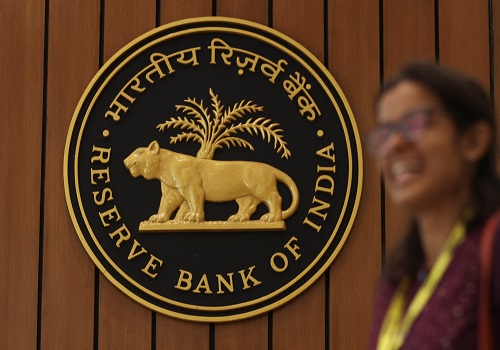RBI MPC meeting update : CPI inflation for Q1FY26 is projected at 4.6% and Q2FY26 at 4.0% by LKP Securities

We have seen a slowdown in economic activity with a modest growth of 5.4% in gross domestic product (GDP) in Q2FY25 (vs. 7.0% in Q2FY25E) due to weak private consumption and investment despite improved government spending. Going forward, strong kharif and rabi crop production, rising industrial activity and continued growth in services, bode well for private consumption. However, headwinds from global political uncertainty, global commodity prices and geopolitical tensions continue to weigh on the outlook. Accordingly, the Reserve Bank of India (RBI) has revised its real GDP growth outlook for FY 25E to 6.6% (previously 7.2%) with Q3FY25 at 6.8% (previously 7.4%) and Q4FY25 at 7.2% (previously 7.4%). Real GDP growth for Q1FY26 is projected at 6.9% and Q2 at 7.3%
The headline consumer price index (CPI) inflation rose sharply to 6.2% in October from 5.5% in September, driven by higher food inflation and a rise in core inflation. While there is positive outlook on food inflation softening in Q4FY25 with seasonal easing of vegetables prices & kharif harvest arrivals, good soil moisture conditions along with comfortable reservoir levels shall augur well for rabi production. Adverse weather events and rise in international agricultural commodity prices, however, pose upside risks to food inflation. Accordingly, the RBI has revised its inflation projection for FY25E to 4.8% with Q3FY25 at 5.7% and Q4FY25 at 4.5%. CPI inflation for Q1FY26 is projected at 4.6% and Q2FY26 at 4.0%.
Furthermore, taking all these factors into consideration the RBI decided to keep the policy rate unchanged at 6.5% and cut the cash reserve ratio (CRR) by 50 bps to 4.0%.
Our view
A reduction in the CRR lowers the proportion of deposits banks are required to hold as reserves with the RBI, thereby releasing additional funds into the system. This will enable banks to lend ?1.16 tn in the system, supporting credit growth and stimulating economic activity, potentially boosting profitability. However, since the repo rate remains unchanged, the cost of borrowing for banks does not decrease immediately, which means lending rates might not reduce significantly in the short term. This move reflects the RBI’s intent to stimulate the economy by easing liquidity constraints while maintaining a cautious stance on inflation. Our view remains positive on the banks.
Please refer disclaimer at www.lkpsec.com/#foo
SEBI Registration number is INM000002483




.jpg)


















